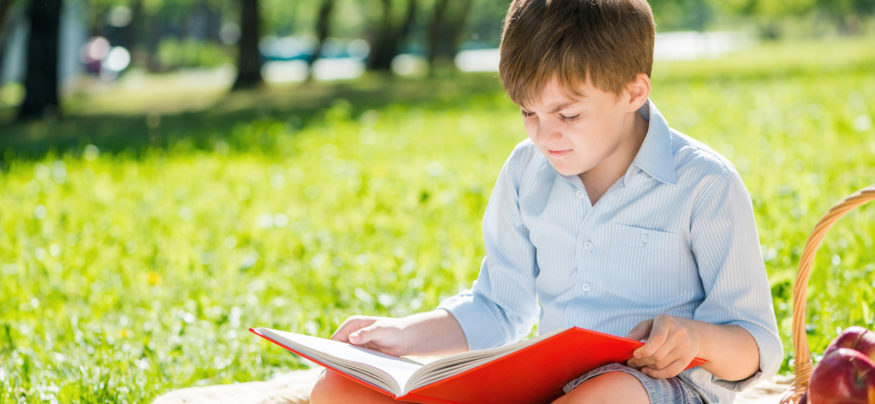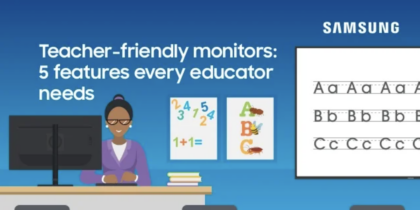Summer is a time when many of us look forward to reading light and fun books, taking advantage of those vacation days by escaping into a different world. And it’s a great time to help our students learn to love summer reading — and for us to learn how to use a book to create a teachable moment for our students even when we’re not around to guide them.
With all the exciting educational technology becoming available to teachers and students, a traditional summer reading list is still one of the most effective ways to keep students engaged when they’re not in the classroom. When you’re prepping your list, you’ve probably got some old favorites and important classics on there. Round it out by also including some of these newer books, many of which have been honored by the American Library Association.
Grades K–2
- “Detective Gordon: The First Case” by Ulf Nilsson. In this detective story for young readers, a frog and a bunny work together to find the squirrel’s missing nuts. Everyone loves to solve a mystery, and these types of books can be great for building student interest in following fiction through to the end.
- “Finding Winnie: The True Story of the World’s Most Famous Bear” by Lindsay Mattick. This Caldecott Medal-winning book tells the story of a rescued bear named Winnie and how she inspired A.A. Milne to write the Winnie-the-Pooh stories we all love.
- “Mango, Abuela, and Me” by Meg Medina. A young girl finds a way to connect with her grandmother, who doesn’t speak English. This story blends Spanish and English to help increase students’ fluency with other languages and cultures.
Grades 3–5
- “Blackbird Fly” by Erin Entrada Kelly. A Filipino-American girl learns about the power of music and friendship to help her face bullying, parental conflicts and low self-confidence. This story can help increase cultural awareness and empathy.
- “Poet: The Remarkable Story of George Moses Horton” by Don Tate. Horton was a slave who taught himself to read and write. He began selling poems locally, earning enough to buy time away from his owner so he could write and work at the local university. This real-world story of life as a slave can help students create a summertime teachable moment and allow them to explore this period in U.S. history.
- “Roller Girl” by Victoria Jamieson. This graphic novel about a girl who learns confidence through roller derby can help inspire your budding artists and reluctant readers with its graphical format. This book was a runner-up for the 2016 Newberry Medal.
Grades 6–8
- “Drowned City: Hurricane Katrina and New Orleans” by Don Brown. A look at the aftermath and rebuilding of Hurricane Katrina, this graphic novel introduces students to concepts of racism and resilience in the face of disaster. “Drowned City” was a runner-up for the Sibert Medal.
- “The Lightning Queen” by Laura Resau. Through the story of a Romani girl and a Mixteco boy, Resau leads readers on an adventure through the folklore of rural Mexico.
- “Orbiting Jupiter” by Gary D. Schmidt. Schmidt tells the story of a teenage foster boy whose new family helps him search for his daughter that he’s never been allowed to meet. This story teaches students empathy and shows how to deal with loss.
Grades 9–12
- “The Darkest Part of the Forest” by Holly Black. A modern fairy tale of danger, romance and action, “The Darkest Part of the Forest” will engage your students who are interested in magic and the supernatural. With male and female lead characters, it will appeal broadly.
- “The Unlikely Hero of Room 13B” by Teresa Toten. The story of a young boy with obsessive compulsive disorder and his support group, this book explores mental illness and the experience of living with it in high school.
- “Turning 15 on the Road to Freedom: My Story of the Selma Voting Rights March” by Lynda Blackmon Lowery. This book provides vital real-life insight into the civil rights movement and the people who were part of it. As the youngest marcher in the Selma March, Lowery shows teens that they can make a difference. This book was a runner-up for the Sibert Medal.
After your students have worked through your summer reading list, they can take their completed reading journal into any local Barnes & Noble bookstore for a free book.
Looking for more ways to sharpen your students’ reading skills? Find out here how educational podcasts are increasingly being used to help students develop reading and critical thinking skills.







